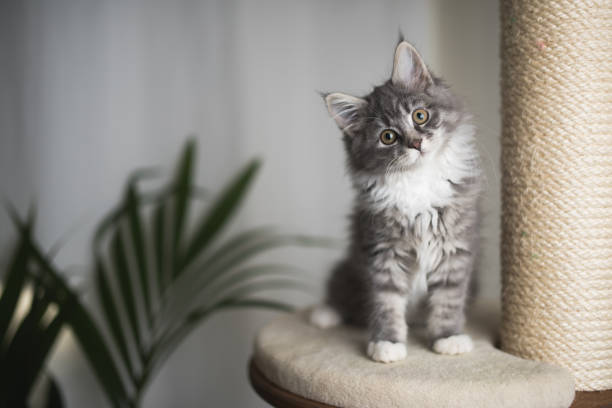What Every Pet Owner Should Know:
As a cat owner, understanding the health risks your feline friend faces is crucial. Cats can suffer from various diseases, some of which can be severe or even life-threatening. By educating yourself about these common cat diseases, you can take proactive steps to prevent them or catch them early in their progression. This comprehensive guide covers the symptoms, causes, and treatments of prevalent cat illnesses, helping you keep your beloved pet healthy and happy.
1. Upper Respiratory Infections (URI):
Upper Respiratory Infections, or URIs, are one of the most common health issues in cats. They are typically caused by viruses such as the feline herpesvirus and calicivirus. Cats suffering from URIs may show signs of sneezing, nasal congestion, runny eyes, and a discharge from the nose or eyes. The best prevention is maintaining your cat’s vaccinations and keeping infected cats away from healthy ones. Treatment often includes supportive care like keeping the nasal passages clear and ensuring the cat stays hydrated.
2. Feline Lower Urinary Tract Diseases (FLUTD):
FLUTD encompasses a variety of conditions affecting the bladder and urethra, which can include urinary tract infections, urinary stones, or urethral blockage. Symptoms to watch for include straining to urinate, blood in the urine, and urinating outside the litter box. FLUTD can be life-threatening if not treated promptly, especially in male cats, as they can become blocked more easily than females. Treatment varies depending on the specific condition but may include dietary changes, medications, or even surgery.
3. Chronic Kidney Disease (CKD):
Chronic Kidney Disease is prevalent among older cats and develops gradually as the kidneys lose function over time. Symptoms include increased thirst and urination, weight loss, and decreased appetite. While CKD is not curable, it can be managed with a proper diet and medications that help reduce the workload on the kidneys, thereby slowing disease progression.
4. Diabetes Mellitus:
Diabetes in cats is often related to obesity and can cause symptoms such as increased thirst, increased urination, weight loss, and decreased energy levels. Managing feline diabetes involves a combination of regulated diet, insulin injections, and regular monitoring of blood glucose levels.
5. Hyperthyroidism:
Hyperthyroidism occurs when the thyroid gland produces too much thyroid hormone, affecting middle-aged and older cats. Symptoms include significant weight loss, increased appetite, and hyperactivity. Treatment options include medication, radioactive iodine therapy, or surgery. Each has its benefits and risks, and choosing the right one depends on the specific health profile of the cat.
6. Feline Immunodeficiency Virus (FIV):
FIV, or feline AIDS, severely weakens a cat’s immune system, making it difficult to fight off other infections. Infected cats may not show symptoms for years. However, once the disease progresses, symptoms can include poor coat condition, persistent fever, and an increased susceptibility to other infections. There is no cure for FIV, but infected cats can live relatively healthy lives with proper management and care.
7. Feline Leukemia Virus (FeLV):
FeLV affects the cat’s body in many ways, including causing cancer (lymphoma), blood disorders, and immune suppression. It is transmitted through prolonged contact with infected cats. Like FIV, there is no cure, but vaccination can prevent the disease. Infected cats require supportive care and regular monitoring to manage secondary infections.
8. Dental Disease:
Dental diseases, including gingivitis and periodontal disease, are incredibly common in cats. Symptoms include bad breath, difficulty eating, and visible tartar on the teeth. Preventive care, such as regular dental check-ups and teeth cleaning, is essential. Advanced cases may require extractions or other surgical interventions.
9. Obesity:
Obesity in cats can lead to several other health problems, such as diabetes, arthritis, and liver disease. Preventing obesity by managing your cat’s diet and encouraging exercise is key to their overall health.
10. Parasitic Infections:
Cats can also be afflicted by various parasites, including fleas, ticks, ear mites, and intestinal worms such as roundworms, hookworms, and tapeworms. Regular preventive treatments and check-ups can help keep these parasites at bay.
Preventive Measures and Early Detection:
The best way to combat these diseases is through preventive care and early detection. Regular veterinary visits, vaccinations, proper diet, and adequate exercise are fundamental aspects of keeping your cat healthy. Additionally, observing any changes in your cat’s behavior or physical condition can help catch diseases early, which is often crucial for the best outcome.
Caring for a cat comes with the responsibility of monitoring their health and ensuring they receive the necessary care and treatment. Understanding these common cat diseases and their symptoms can help you provide the best possible care for your feline friend. Always consult with your veterinarian when you notice any unusual symptoms in your cat and follow their recommendations for vaccinations and regular check-ups.
Keep your cat healthy and happy by staying informed and proactive about their health needs. Your furry friend depends on you!
